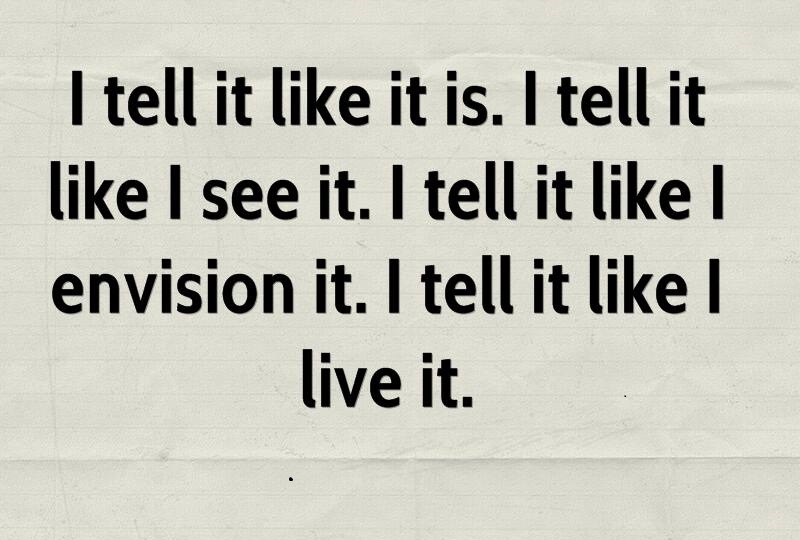
Say what is!
“Say what is” is our blog’s subtitle, and it is the thread running through our posts. Because it is not an established idiom, some people asked why we chose to use this specific one, so we decided to provide an explanation.
Hannah Arendt, a famous German philosopher, denotes factual truths in history and politics as “say what is” in her essay “Truth and Politics”*. For example, the occurrence of holocaust is a factual truth, while its denial would be euphemistically called an “opinion”. By contrast, factual truths are also often called “opinions” by the ones that don’t want to hear them.
This blog is about describing our own experiences and observations about the world. “Saying what is” in this context means “To speak bluntly, directly, and truthfully, even if it is undesirable to hear [or say]”. This definition is taken from the Free Dictionary to explain the idiom “To tell it like it is”. However, it doesn’t mean unreflectively blurting out every “opinion” that comes to our mind. It certainly doesn’t mean hiding any sorts of sexism, racism, or any other form of discrimination behind the plea for freedom of expression.
“To tell it like it is” is more commonly known than “Say what is”. However, we chose to use the latter, because it reflects the essence of this blog for a number of reasons besides the reference to Hannah Arendt’s meaning. “Say what is” is completely naked, stripped off of any unnecessary words. On the one hand, this nakedness reflects on putting ourselves in a vulnerable position when “saying what is”. On the other hand, it encourages to “say what is” straight out of our heart and mind without beating around the bush. The simplicity of “say what is”, compared to other idioms which are seemingly equivalent, such as “tell it like it is”, provides its beauty and functionality. It better reflects the purpose of our blog: learning to be vulnerable, to open up, to remove our masks and connect with people from all sorts of backgrounds.
To “say what is” requires reflection, self-awareness and social awareness. It is neither fully objective nor fully subjective. The reality we describe is always limited by the factors we are aware of. As Hannah Arendt points out in her essay, we can never claim to be absolutely objective:
“What we understand as reality is always more than the sum of all facts and events that we can possibly know about.”
– translated from German

To “say what is” is also about story-telling, specifically real life stories:
“Who says what is always tells a story, and in this story the particular facts lose their contingency and acquire some humanly comprehensible meaning. It is perfectly true that ‘all sorrows can be borne if you put them into a story or tell a story about them.’”
– translated from German
Maybe we can never fully grasp social reality, but the more stories we share with each other in a spirit of “saying what is”, the more we can connect with each other. Our respect for each other’s differences and similarities will grow and so will our understanding of our equal worth.

Written by Julia Heuritsch | Last edited: 16th June 2022